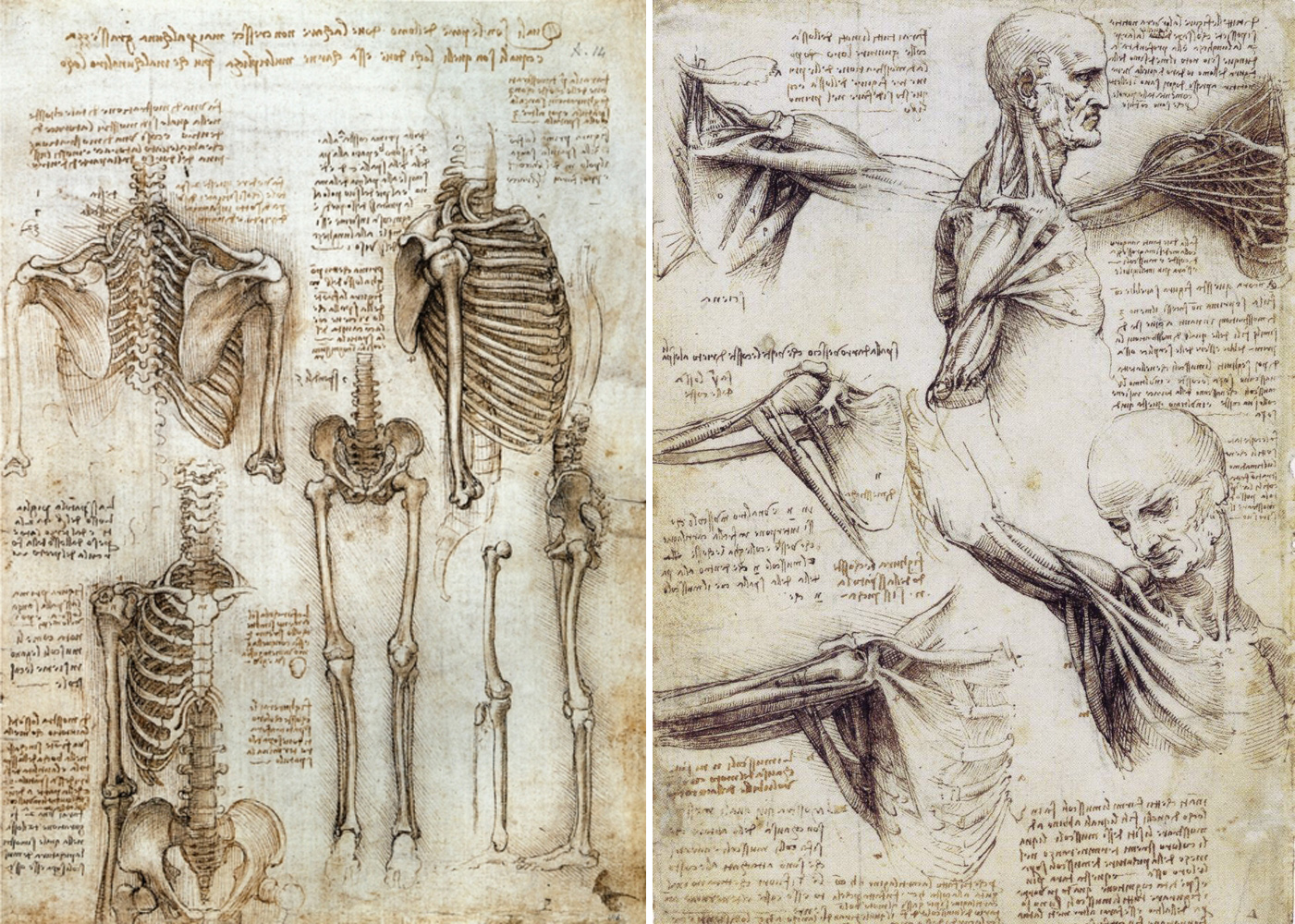Last week I went to the Manchester Art Gallery to explore the ‘Leonardo da Vinci: A Life in Drawing’ exhibit. This exhibit, part of a nationwide exhibition, has been held to celebrate the life and art work of Leonardo da Vinci; marking the 500th anniversary since his death. The gallery displayed twelve drawings of the body by Leonardo da Vinci, including anatomical studies; male and female studies; drapery; and models in action, on loan from the Royal Collection.
The exquisite drawings on display showed just why Leonardo da Vinci is known as the Renaissance master, his works showed his profound understanding of human anatomy. By intensely studying how the human body is supported by the skeleton and musculature, Leonardo da Vinci was able to depict the human figure as it is in nature. Looking at the drawings on display Leonardo da Vinci appears to have had a fascination with the shoulder joint and the foetus.
According to many historians Leonardo da Vinci took his fascination of the human anatomy to the next step, and at some point started dissecting bodies, allegedly dissecting 30 in total. It is clear from his drawings that Leonardo da Vinci had an exceptional understanding of the inner workings of the human body. Just like Leonardo, life drawing requires the artist to be familiar with the internal structure of the model so we can portray in an appropriate and convincing way the external forms of the body. Although I am not asking you to dissect a body, picking up a book on the anatomy, studying the muscle groups and the skeleton is a very useful step in understanding form, posture and position in relation to the movement of the bones, joints and muscles.
However as useful as anatomy books are at creating an awareness of muscles, joints and the skeleton, it is through careful and prolonged observation of the human body that our understanding of what constitutes elements of movement truly deepens. This is were life drawing is so important, observing a nude figure in action; changing position in the quick gestural poses; or observing sustained positions enables the artist to become aware of the muscles contracting and connecting; and the movement of the skeleton such as the spine and pelvis, as the model preforms a movement. Indeed it is through life drawing, that artists are able to practise their skill at defining the nude figures external appearance, enabling them to transfer this skill to realistic portraits, caricatures or even sequential art.
I really appreciate you reading my words, there's no charge, but if you want to offer a little support, click on the button below to buy me a coffee or two!







